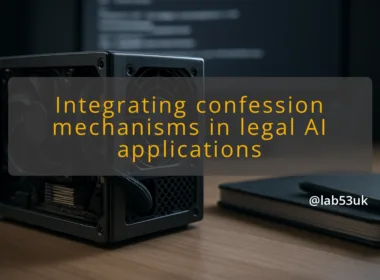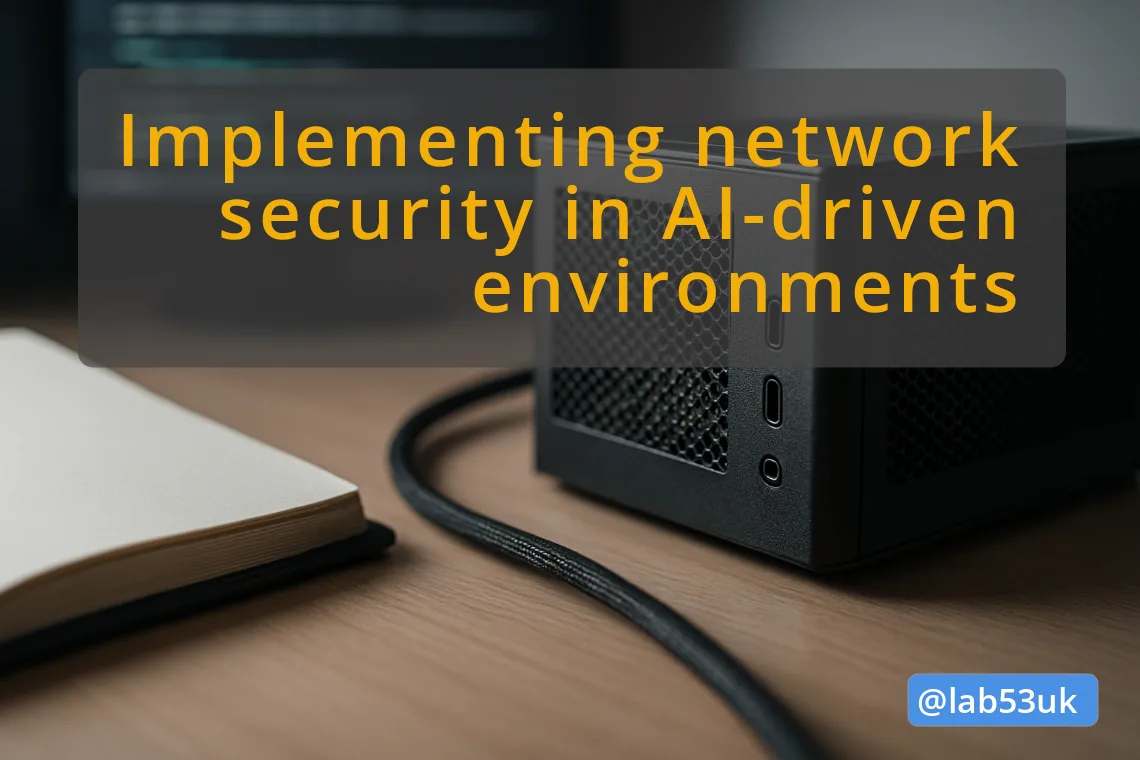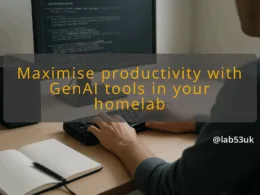Navigating AI-Driven Isolation: Building a Privacy-First Home Lab
I run an AI Home Lab from my spare room. I want models and agents to do useful things, not to silently leak data or isolate me behind black-box services. This guide shows practical network security moves for an AI Home Lab. I keep examples concrete and repeatable. Expect commands, config ideas and one-liners you can adapt.
Introduction to AI Home Lab
The significance of network security in AI
AI workloads change the attack surface. Local models may need large files and GPUs. Cloud models may ask for API keys. Both can expose data, telemetry or credentials. Treat every AI process like a potential internet client. Assume it will try to reach out. That assumption drives sane network security.
Overview of AI Home Lab setups
A typical AI Home Lab has a host for virtualisation, a GPU or two, a NAS for data, a router with VLAN support, and automation tools such as Home Assistant. I run a hypervisor on a small server, a NAS for datasets, and a Pi-class device for DNS and light services. The physical layout matters. Place more sensitive systems on separate subnets.
Key components of an AI Home Lab
- Hypervisor: Proxmox, KVM or similar for virtualisation of services. Use VMs for isolation that must touch hardware; use containers for stateless services.
- GPU host: Pass through the GPU to a VM for model training or inference.
- Router/switch: VLAN-capable, with a configurable firewall.
- DNS filter: Pi-hole or Unbound to control DNS requests and stop accidental data leaks.
- VPN: WireGuard for remote access; avoid exposing admin consoles to the open internet.
- Automation engine: Home Assistant or scripts to trigger security scenes when something odd happens.
The role of automation in security
Automation scenes make security practical. I use automations to quarantine odd endpoints, rotate ephemeral keys, and enable deeper logging during suspicious activity. For example, when a non‑trusted device appears on the network, an automation can move it into a quarantine VLAN and notify me. Automation reduces response time and keeps the lab usable.
Best practices for AI-driven environments
Follow homelab best practices: separate services by function, minimise privileges, keep secrets out of container images, and centralise logs. Run regular backups of model weights and configs. Rotate keys and use per-service credentials. Test restores. Prefer local inference for sensitive data rather than sending raw inputs to cloud APIs.
Strategies for Effective Network Security
Implementing privacy settings for AI systems
Privacy settings are both app-level and network-level. Where possible, switch models to offline mode and disable telemetry. For cloud services, create least-privilege API keys and bind them to specific IPs or referrers. Store secrets in a vault such as pass, Vault, or a simple encrypted file with tight access controls.
Network tactics:
- Use DNS filtering to block known telemetry domains. Pi-hole with a curated blocklist stops many calls.
- Block outbound ports except those you expect. For example, allow HTTPS for specific hosts only.
- Create an allowlist for external endpoints your model legitimately needs.
- Run local instances of services the model expects where feasible. A local embedding service or a self-hosted vector DB cuts outbound traffic.
Example: to block a VM from making arbitrary outbound connections with nftables:
sudo nft add table inet filter
sudo nft add chain inet filter output { type filter hook output priority 0 \; }
sudo nft add rule inet filter output oifname != lo ip protocol tcp tcp dport 443 ct state established,related accept
sudo nft add rule inet filter output oifname != lo counter reject
That keeps the VM from talking to the web except where rules permit.
Utilizing virtualisation for enhanced security
Virtualisation isolates workloads. I run untrusted models in dedicated VMs and use a lightweight management VM for orchestration. GPU passthrough gives performance without losing isolation.
Practical steps:
- Use separate VLANs per trust level: trusted, untrusted, IoT, guests.
- Host a jump VM for admin access. Admin into that VM, then SSH into internal services; do not expose SSH to the wider network.
- Use snapshots and immutable images for inference VMs. Rebuild them routinely to remove persisted compromise.
- Apply AppArmor or SELinux policies within VMs and containers for process-level restrictions.
If you pass a GPU to a VM, remember PCI passthrough removes some hypervisor-level inspection. Compensate by tightening network filters and monitoring that VM closely.
Best practices in network security
Keep rules small, explicit and logged. Logs tell you what tried to get out. Retain logs long enough to investigate. I forward firewall and host logs to a central syslog or an ELK-like stack on a separate server.
Use strong SSH controls: key-based auth only, different keys per host, and short-lived agent keys for remote sessions. Disable password login. Run multi-factor authentication for any web UI that supports it.
Make access predictable. If you use a VPN, keep the configuration in version control and rotate keys. For remote access, prefer WireGuard because it is lightweight and auditable. Lock administrative interfaces to specific internal IP ranges.
Automation scenes for security management
Automation scenes are practical when incidents occur. Examples I use:
- Quarantine scene: On detection of an unknown MAC address on the main VLAN, move it to a quarantine VLAN and trigger a notification.
- Lockdown scene: If a high-rate of outbound connections is detected from a host, automatically block that host for a fixed period and start packet capture.
- Key-rotation scene: Weekly rotate ephemeral API keys used by auxiliary services and reload them via a secrets store.
Implement these with Home Assistant, Ansible or simple scripts integrated with your router API. Keep automations auditable and reversible.
Addressing security challenges in AI environments
Large models use large data. That raises storage and leak risks. Encrypt model storage at rest. Limit who and what can read model directories. Run discovery scans for sensitive files before exposing them to inference services.
Models and toolapis can execute arbitrary code if misconfigured. Turn off exec hooks in agent frameworks unless strictly necessary. Audit third-party model packages. Treat downloaded models as untrusted binary blobs until scanned.
Monitor behaviour with simple heuristics: spikes in outbound connections, DNS queries to new domains, or sudden CPU/GPU load from an unusual VM. Alerts let you act before data leaves the lab.
Future trends in AI network security
Expect more AI components that phone home by default. That means stronger local privacy settings will matter more. I recommend designing the lab so you can swap in local services quickly. Keep an eye on model supply chains for trojans and on telemetry channels for new endpoints.
Practical takeaways
- Segment the network with VLANs and explicit firewall rules.
- Run potentially risky models inside dedicated VMs, with GPU passthrough when needed.
- Use DNS filtering and an allowlist for outbound connections.
- Automate quarantine and key rotation to cut reaction time.
- Encrypt model storage and limit privileges to minimise leak risk.
Build the AI Home Lab incrementally. Start with a VLAN and Pi-hole, add a VM for models, then add automation scenes. Each step reduces exposure and keeps the lab usable. Make security part of the workflow, not an occasional task.







